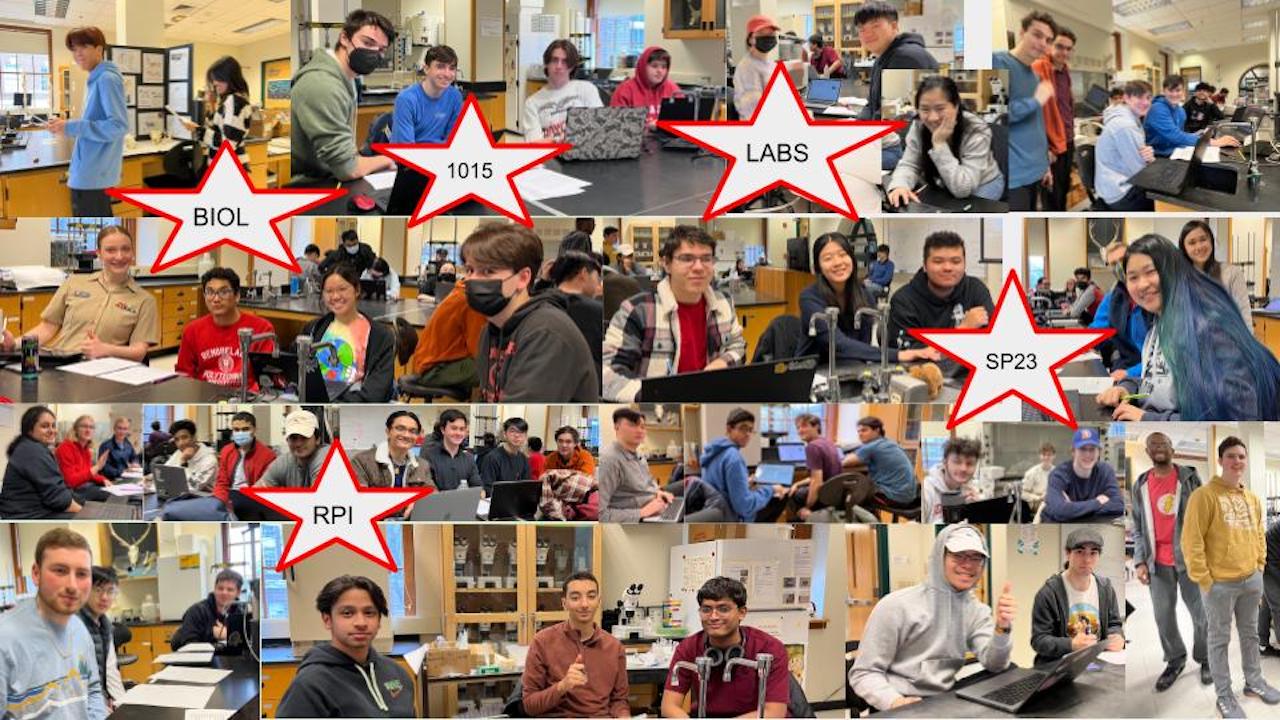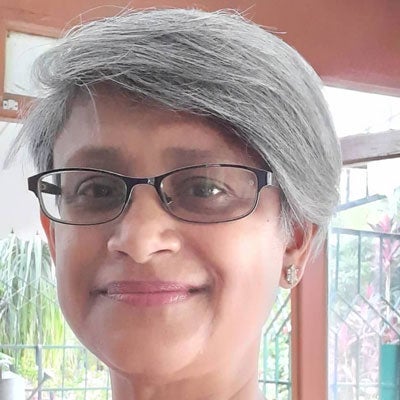About
Dr. Seemanti Ramanath completed her Ph.D. degree at RPI. Towards her Ph.D degree, she used cloning techniques to create multiple transgenic fly lines to study the Muscle Physiology of Drosophila melanogaster (fruitflies), focussing on understanding the structure-function of myosin isoforms. Her undergraduate degree is in Microbiology from the Sophia College for Women, Mumbai, India. Her master's degree is from the University of Illinois at Urbana-Champaign, where she worked in the area of Plant Molecular Systematics. This research work required the collection and analysis of data from DNA sequences, as well as the study of morphological traits of native North American and Meso-American plant species, within Apiaceae subfamily Apioideae. This endemic plant group includes several well-known herbs and edibles, such as Daucus carota (carrots). Post-doctoral training at RPI, immediately after her Ph.D., allowed her to extend her Ph.D. thesis work. For further post doctoral training, she moved cross the River Hudson, to SUNY Albany, where she investigated the biochemical effects on intein splicing in an ancient iron-sulfur protein, SufB in Mycobacterium tuberculosis.
She started teaching BIOL 1015 Labs "Introduction to Biology Labs" in the Fall of 2014, at RPI . At RPI, she teaches BIOL 1010 "Introduction to Biology" during the Summer II term of each academic year. She teaches BIOL 2960 "Human Evolution Lab" during the Summer I term, and BIOL 1961 "Sense and Signal" during the Summer III term. Till date, Dr. Ramanath has taught greater than 7,200 students at RPI.
Dr. Ramanath strongly believes in creating a welcoming environment in her labs (37 majors enrolled in BIOL 1015 labs in Fall 2022), and being inclusive of diverse intellectual, creative and cultural pursuits and perspectives. Having lived in 7 countries, she speaks Assamese, Hindi, and English is her third language. Upstate New York is home, and the U.S.A. is her home country. But, Dr. Ramanath was born in Assam, India, at the foothills of the Himalayas. As a child, she spent 2 years in Adelaide, Australia. As an adult, she spent a couple of months in Linkoping, Sweden, a summer in Tsukuba, Japan, and almost a year in Stuttgart, Germany. Most recently, she spent 1 month in Hong Kong, China. Learning Swahili in college with her Kenyan friends from Nairobi, Hiragana (Japanese) during a summer in Japan, introductory German via a 6 month long crash course, and Sanskrit during a year in middle school gave her a taste of our rich human linguistic diversity. These life experiences have taught Dr. Ramanath, that on the whole, there is much unity in our shared human socio-cultural diversity, irregardless of our individual socio-economic status, or our separate geographic origins. Hence, in her labs, participation in group lab-work is emphasized because it provides an opportunity for all voices to be heard. Students get together in labs, and work on a common project. What emerges is novel, and unpredictable from a mere knowledge of the parts, and greater than the sum of the individual participants. This lab dynamic, not only enables students to insightfully see several aspects of a problem, through the different perspectives of peers, but allows them a chance to engage in peer-to-peer dialogue, and to make connections across disciplines and majors. Once such connections are built, the impact of such collaborations typically endure. This scholastic network supports students, as they weave their way through college, and beyond, into the workplace. It is connections, collaborations and community, that are crucial towards the success of every student's professional and personal life.
If you have not yet taken a course with Dr. Ramanath, what are you waiting for?
If you have already taken one of her courses, be sure to write her an email including your glad tidings since you graduated from RPI!
Ph.D. Rensselaer Polytechnic Institute, 2011 - Biology
M.S. University of Illinois at Urbana-Champaign, 1997 - Plant Molecular Biology
B.S. Sophia College for Women, Bombay University, Mumbai, India, 1989 - Microbiology
Post-degree Research & Training
Postdoctoral Researcher, University at Albany, 2012-2013 - Biological Sciences. Advisor: Dr. Marlene Belfort. The Regulation of Intein Splicing in Mycobacterium tuberculosis SufB.
Postdoctoral Researcher, Rensselaer Polytechnic Institute, 2011-2012 - Biological Sciences. Advisor: Dr. Douglas M. Swank. The Influence of the Five Alternative Drosophila Myosin Converter Domains on Muscle Performance.
Non-Degree Preparation
Partial credits earned towards an M.B.A degree, Gauhati University, Guwahati, Assam, India, 1992.
Research
Dr. Seemanti Ramanath completed her undergraduate degree in Microbiology at Sophia College for Women, in Mumbai, India. At the University of Illinois at Urbana-Champaign, she obtained her Master's degree in Plant Molecular Systematics. This research work required the collection and analysis of data from DNA sequences, as well as the study of morphological traits of North American and Meso-American plant species within Apiaceae subfamily Apioideae. This plant group includes several well-known herbs and edibles, such as Daucus carota (carrots). Towards her Ph.D degree at RPI, Dr. Ramanath used cloning techniques to create multiple transgenic fly lines to study Muscle Physiology in Drosophila melanogaster(fruitflies), focussing on understanding the structure-function of myosin isoforms. Her post-doctoral training involved investigating the biochemical effects on intein splicing in an ancient iron-sulfur protein, SufB in Mycobacterium tuberculosis.
Postdoctoral Research Associate: 2012-2013. Department of Biological Sciences, University at Albany. Advisor: Dr. Marlene Belfort. The Regulation of Intein Splicing in Mycobacterium tuberculosis SufB.
Postdoctoral Research Associate: 2011-2012. Department of Biological Sciences, Rensselaer Polytechnic Institute. Advisor: Dr. Douglas M. Swank. The Influence of the Five Alternative Drosophila Myosin Converter Domains on Muscle Performance.
Teaching
Dr. Seemanti Ramanath has taught greater than 7,200 students at the Rensselaer Polytechnic Institute. She (Dr. R to her students) continuously evaluates course content, seeking to supply basic skills to RPI undergraduates via her course design. Her major goal is to infuse in them the spirit of lifelong learning about our world. Knowledge of our world, means to discover the causal factors for natural phenomena by the proper application of the Scientific Method, and through the thorough analysis of data. Hence, her courses are designed with this goal in mind. She believes that this process of discovery is what will ultimately lead RPI students to "change the world".
Academics & Research Background: Dr.R. completed her undergraduate degree in Microbiology at Sophia College for Women, in Mumbai, India. At the University of Illinois at Urbana-Champaign, she obtained her Master's degree in Plant Molecular Systematics. This research work required the collection and analysis of data from DNA sequences, as well as the study of morphological traits of North American and Meso-American plant species within Apiaceae subfamily Apioideae. This plant group includes several well-known herbs and edibles, such as Daucus carota (carrots). Towards her Ph.D degree at RPI, Dr. R. used cloning techniques to create multiple transgenic fly lines to study Muscle Physiology in Drosophila melanogaster (fruitflies), focussing on understanding the structure-function of myosin isoforms. Her post-doctoral training involved investigating the biochemical effects on intein splicing in an ancient iron-sulfur protein, SufB in Mycobacterium tuberculosis. Thus, Dr. R. brings a broad academic training and perspective to her innovative course design at RPI.
Managerial Background: Along the way, Dr. R. earned partial M.B.A. degree credits, which education she finds valuable in her current position, managing large enrollments each semester, composed of a wide spectrum of majors, coordinating multiple laboratory sections, and supervising diverse groups of personnel, inclusive of the training of graduate teaching assistants (TAs), undergraduate mentors (UGMs), federal work study (FWS) students, and mentoring new Faculty Lecturers in BIOL 1015 Lab courseware.
Teaching Goals: Whether studying bacteria, plants, or animals, Dr.R. states that it is the visualization of the underlying molecular mechanisms in the data patterns that enables the building of new knowledge. In her courses, students tackle multiple and diverse data types, thereby gaining a strong introduction to basic laboratory skills. Students apply foundational concepts from diverse fields within biology, for instance, microbiology/molecular biology, bioinformatics/phylogenetics, biochemistry/structural biology, and bio-computations/bio-statistics. Students gain data dexterity, which is essential to the building of the basic tool-kit of a well-equipped RPI graduate.
By appointment
BIOL 1010 - Introduction to Biology
In this course, students gain a basic knowledge repertoire of the foundational concepts of biology. Both majors and non-majors are the target audience and contributing discussion participants. Students are encouraged to investigate how the basic biological principles apply to recent relevant research, that seek to solve the grand challenges of our times. What is life? In answering this question, students come away with a fundamental understanding of our ecology, genetics, and evolution. Students engage in ethics discussions to gain awareness of how technology can help, not hinder, our species to better the human condition.
BIOL 1015 - Introduction to Biology Lab
In this lab course, students gain hands-on experience working interactively with peers in laboratories. In these labs, students pose hypotheses, visualize models, predict outcomes, share ideas with laboratory peers, and design tests of their hypotheses via in-person lab discussions, and via in silico simulations. They are encouraged to bridge classroom content and real world events, by keeping abreast of relevant recent research. Summer field trips to the New York State Museum at Albany allow students to discover our past ecology, explore ice-age megafaunal evolution and extinction, and absorb our local socio-cultural history. Thus, students relate what they learn in labs, to the real (and local) world. Laboratory activities include the collection and analysis of diverse datasets:
- Ecology: Students identify specimens in local Albany stream water samples ex situ at RPI Walker Labs, generating datasets of community taxa.
- Bio-Statistics: Students compute Shannon's Diversity Index, EPT index, and J index to understand species richness and evenness in the above limnological community samples, and perform a Student's TTest to evaluate their datasets, and compare the health of two of our local Albany streams.
- Cell Biology 1: Students travel into our invisible (to the naked eye) world, by using Light Microscopy to visualize living eukaryotic cells at the micron-scale level in pond scum. They compare these observations with those of prokaryotic (bacterial) cells in yogurt and other common fermented foods.
- Cell Biology 2: Students compute and compare cell cycle phase durations in animal (Ascaris) and plant (Allium) cells.
- Genetics: Students understand Mendelian Inheritance Patterns by examining the genetic information flow patterns in in vivo data, using fruit flies as their model organism.
- Molecular Biology: Students extract DNA, and visualize in vitro PCR amplified DNA data.
- Evolution: Students generate in silico phylogenetic trees from ungulate megafaunal morphological data.
- Bio-Chemistry: Students move biochemical structures, on an AI learning Platform, to understand how amino acid monomers join together to form protein polymers, and predict biochemical outcomes of a mutation.
- Bio-Informatics: Students learn to use software to visualize protein crystals at the nano-scale level in data stored in PDB, NCBI and in other public databases.
- ArtX projects enable students to create innovative projects via their favorite medium of art, such as storytelling, cartoons, painting, dance, music, drama, or via their favorite interests, such as, sports, math, architecture, economics, material science, engineering, AI, or coding, with the goal of making connections between newly-learned Biology concepts, and their major field of study.
Thus, students learn to apply the Scientific Method to datasets in labs. Simultaneously, via such team-based laboratory activities, students build peer networks, across disciplines, across campus departments and schools, while working collaboratively together in the labs because they hail from a wide spectrum of majors, and from disparate geographic or socio-economic areas. Hence, a firm sense of inclusion, diversity and belonging is nurtured in such active labrooms, with educational equity. Yelnar, a student from Kazakhstan noted “I made friends in this course” during freshman year away from his relatives, with a frozen bank account, while war raged in Ukraine in 2021.
BIOL 1961 - Sense and Signal
This is an undergraduate level introductory course. It explores fundamental concepts in neurobiology such as, the human body’s chemical and electrical signals, how neurons communicate, the action potential, ion channels, neurotoxins, muscle contraction, neurological diseases, as well as animal movement, behavior, and intelligence. The goal is to understand our human body, how it receives signals, how it processes signals, and how it transmits signals. In other words, how do living beings live? How does life work? The course emphasizes active learning in a collaborative environment via interactive discussions on life's mechanisms.
BIOL 2940 - Introduction to Biology Undergraduate Mentor I, II and III
The primary role of the undergraduate mentor (UGM) is to facilitate and enhance the teaching and supervisory activities of the graduate teaching assistant (TA) within each of the Introduction to Biology BIOL 1015 Laboratory Sections. The UGM demonstrates the use of laboratory equipment, follows safety procedures, performs Molecular Biology techniques, such as, PCR & Gel Electrophoresis, Microscopy & Wet Mount Preps, and shows students how to collect data, such as Megafaunal Morphological Traits for Cladistics. The UGM brings an excellent understanding of how the course operates since the UGM has previously taken the laboratory course. The UGM demonstrates techniques, and helps undergraduates learn a wide range of skills, from wet lab skills, to quantitative/statistical skills, to basic biochemistry/bioinformatics data visualization skills, and more. Thus, the UGM not only gains teaching experience, but gains fluency in basic laboratory research skills. Meantime, the UGM enriches their own managerial skills repertoire, by setting up/ breaking down laboratory sessions, inventorying laboratory supplies and specimens, and interacting collaboratively within a team, to ensure smooth delivery of the laboratory course.
BIOL 2960 - Human Evolution Lab
This course explores the status of our current knowledge on Human Evolution. The goal is to provide active learning in a collaborative environment, to seek the causal factors leading up to our own emergence. What makes a human? Data collection is from laboratory specimens (phenotypic traits), as well as from public databases (genomic/protein datasets). Interactive discussions, simulations/computational activities allow students to generate hypotheses, and design tests of their hypotheses. Data analysis utilizes the supporting evidence, while tracing the evolutionary relatedness amongst primate/mammalian species. The impact of disease pathogens, lifestyle/culture and environment on human populations is discussed.
Recognition
- 2010 RPI Founder’s Award of Excellence, RPI, Troy, NY.
- 2009 Platform Talk, 53rd Biophysical Society Meeting, Boston, MA.
- 1995 46th Incomplete List of Teachers Ranked as Excellent by Their Students, University of Illinois at Urbana-Champaign, IL.
Publications
The following is a selection of recent publications in Scopus. Seemanti Ramanath has 4 indexed publications in the subjects of Biochemistry, Genetics and Molecular Biology, Agricultural and Biological Sciences, Biochemistry, Genetics and Molecular Biology.
Photos, Peers, and Connections
FALL 2023 BIOL 1015 Labs:
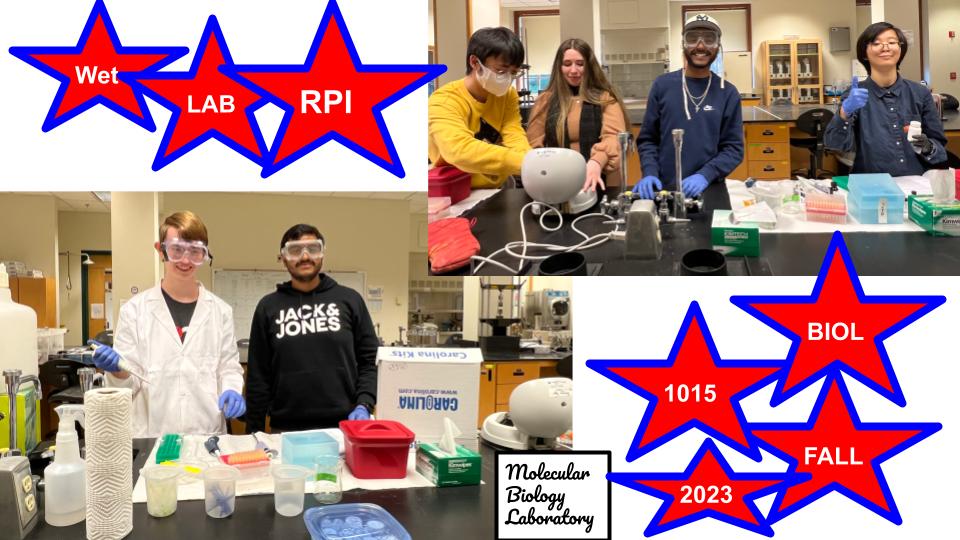
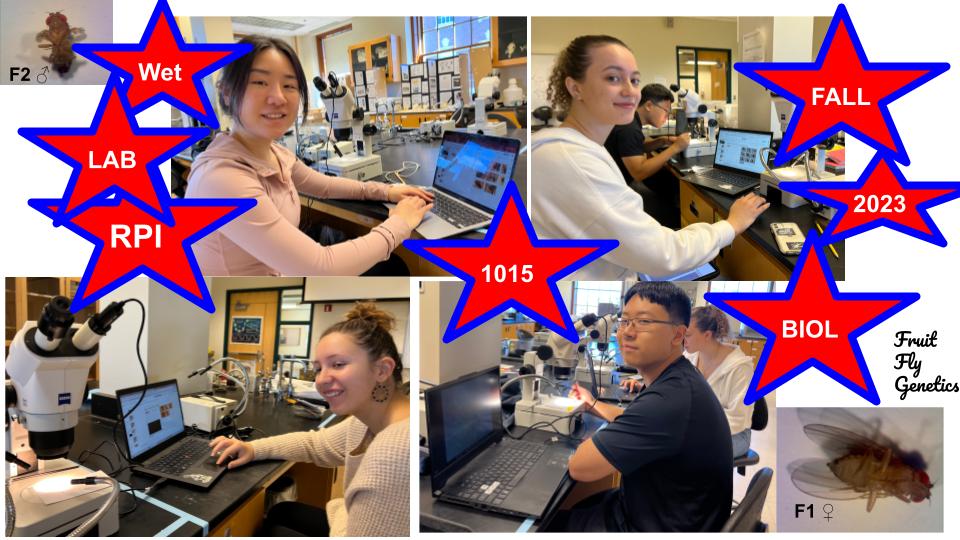
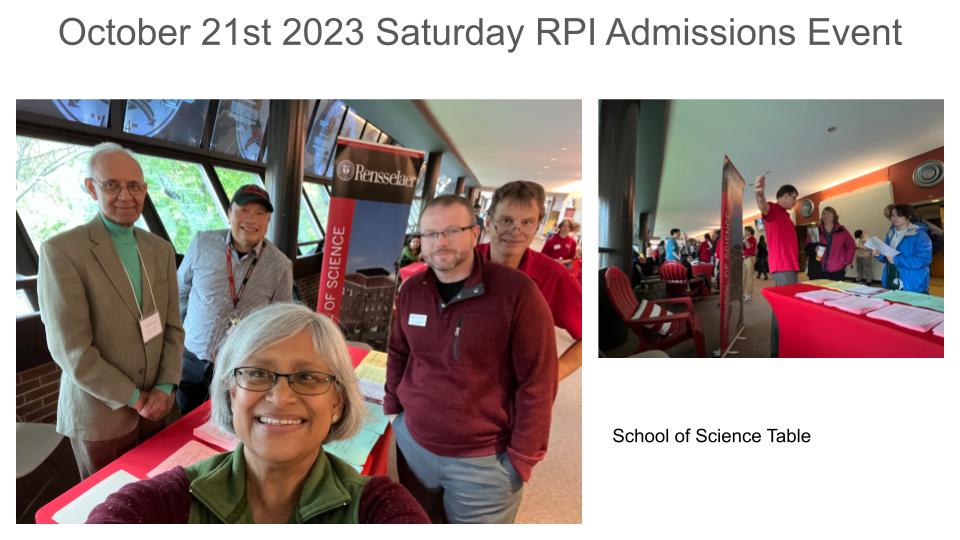
Although 30% of students enrolled are CSCI majors (see Histogram "Diversity" below), there is a wide diversity of majors (count 33 excluding undeclared) registered in BIOL 1015 labs. This diversity allows you to make peer connections, and offers a rich collaborative learning experience in BIOL 1015 labs.

Most students take this course in their freshman or sophomore year (see Pie Chart "UG Ranks" below).

Summer 2023 BIOL 1015 Labs:
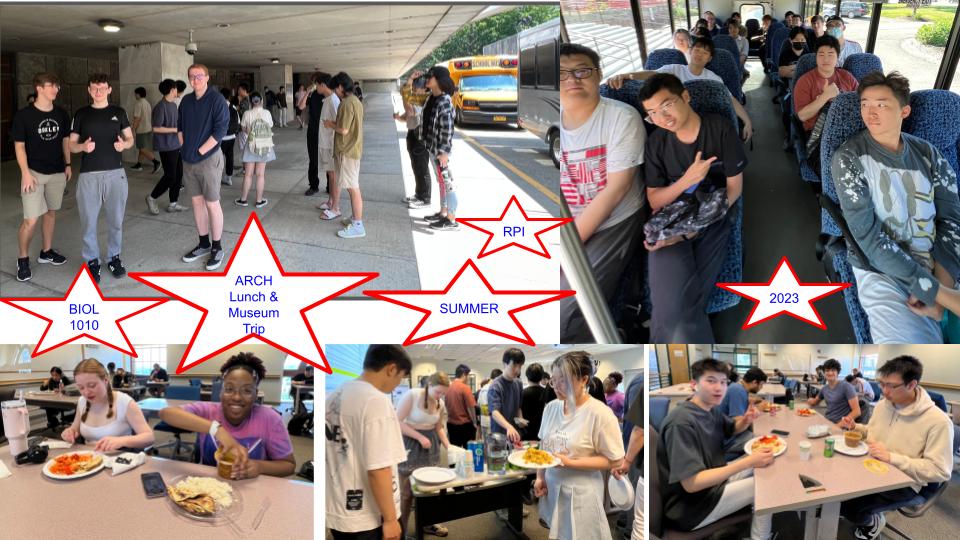
Summer 2023 BIOL 2960 Labs:
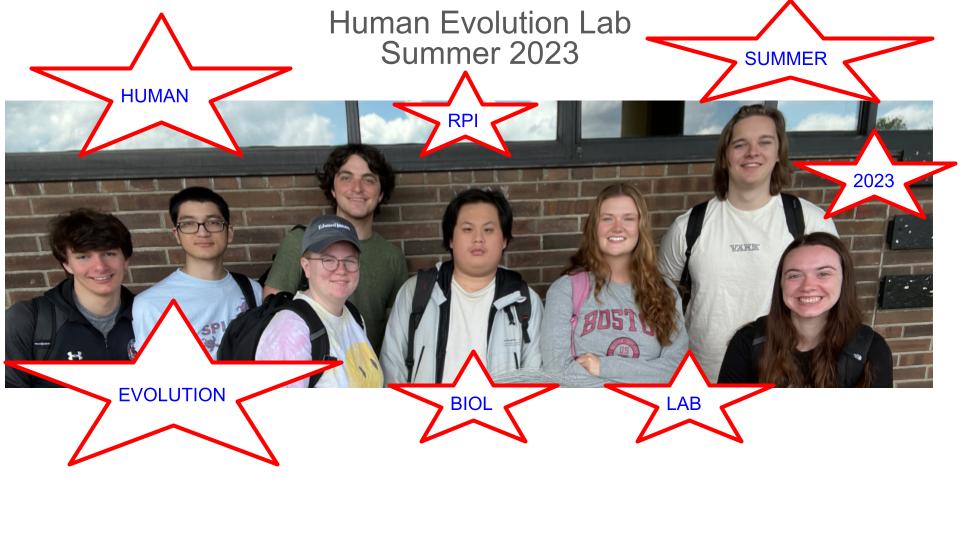
Spring 2023 BIOL 1015 Labs:
